Don't wanna be here? Send us removal request.
Text
How personalization is changing gaming ?

Personalization is becoming an increasingly important aspect of the gaming industry. With advancements in technology, game developers are now able to provide personalized experiences that cater to each individual player’s preferences and behavior.
Here are some ways personalization is changing gaming:
Customizable Characters Many games allow players to create their own customized characters with unique features such as hair color, clothing style or even facial features thus making it more engaging for players.
Personalized Game Content Game content can be personalized based on user data like demographics , favorite games genres etc leading towards better engagement rates & satisfaction levels among users
Adaptive Difficulty Levels Adaptive difficulty levels adjust automatically based on player performance which helps ensure a balanced gameplay experience for all skill-levels .
Targeted In-Game Ads In-game ads can be targeted at specific audience segments through use of demographic/behavioral segmentation strategies thereby resulting into increased click-through rates (CTR) and ultimately higher revenue streams
Personalized Recommendations Recommendation systems offer suggestions based on past user behaviour & interests leading towards greater chances of conversion .
Improved Retention Rates By providing highly-personalised gaming experience businesses can build stronger relationships with its customers resulting in increased retention rates leading towards long-term loyalty
In conclusion, personalization has revolutionized the gaming industry by creating unique and tailored experiences for each individual player . It has enabled companies to improve customer engagement, satisfaction levels along with boosting overall ROI Ultimately by focusing efforts on creating highly-personalized campaigns via customization options within game-play or recommendations system lead to improved customer retention rate which is key metric determining success within this sector
0 notes
Text
The Digital Engagement Map to Successfully Navigate the Travel and Hospitality Landscape in 2023

The travel and hospitality industry is evolving rapidly, driven by digital transformation and changing consumer behaviors. As we step into 2023, a robust digital engagement strategy is more crucial than ever. Let’s embark on a journey to explore the key elements of your digital engagement map to ensure success in this dynamic landscape.
1. Online Presence: Crafting a Seamless Digital Experience
In an era dominated by online interactions, your brand’s online presence is paramount. Ensure your website is user-friendly, mobile-responsive, and provides a seamless booking experience. Leverage engaging visuals and compelling content to capture the attention of potential travelers.
2. Social Media: Building Connections and Fostering Trust 🤳
Social media platforms are powerful tools for building a community and fostering trust. Share captivating travel stories, stunning visuals, and user-generated content to inspire and engage your audience. Actively respond to comments and messages, humanizing your brand and creating a sense of connection.
3. Personalization: Tailoring Experiences for Individual Travelers 🧳💼
Utilize data to personalize the customer journey. From personalized booking recommendations to post-stay offers based on preferences, personalization enhances the overall travel experience. Implementing dynamic content on your website and in email campaigns can significantly improve engagement.
4. Loyalty Programs: Turning One-Time Guests into Repeat Visitors 🌟🔄
Implementing a robust loyalty program encourages repeat business. Offer perks such as exclusive discounts, room upgrades, or personalized experiences for loyal customers. Leverage automation to manage and communicate with your loyalty program members effectively.
5. Chatbots: Enhancing Customer Service and Streamlining Bookings 🤖💬
Integrate chatbots into your website to provide instant assistance. Whether it’s helping with bookings, answering FAQs, or offering local recommendations, chatbots enhance the customer experience. Ensure that there’s a seamless handoff to human agents when needed.
6. Reviews and Testimonials: Building Credibility and Confidence
Positive reviews and testimonials play a pivotal role in the decision-making process for travelers. Actively encourage satisfied customers to leave reviews on platforms like TripAdvisor or Google. Showcase these testimonials on your website to build credibility and instill confidence in potential guests.
7. Email Marketing: Nurturing Customer Relationships 📧🤝
Craft engaging and personalized email campaigns to nurture relationships with past and potential customers. Share travel inspiration, exclusive offers, and updates about your services. Implement segmentation to tailor messages based on customer preferences and behaviors.
8. Contactless Experiences: Prioritizing Safety and Convenience 🚗🔒
Given the ongoing concerns around health and safety, prioritize contactless experiences. Implement mobile check-ins, digital room keys, and contactless payment options to enhance convenience and reassure travelers about their safety.
Conclusion: Navigating the Future of Travel and Hospitality 🚀🌟
As you navigate the travel and hospitality landscape in 2023, a comprehensive digital engagement strategy is your compass. From an enticing online presence to personalized experiences, loyalty programs, and embracing emerging technologies, these elements collectively shape a memorable and seamless journey for your guests. Embrace the digital transformation, stay attuned to consumer preferences, and let your digital engagement map guide you toward success in the ever-evolving travel industry. Bon voyage! ✈️🌐
0 notes
Text
How Retention Strategies Can Be Built With the Help of Marketing Automation ?
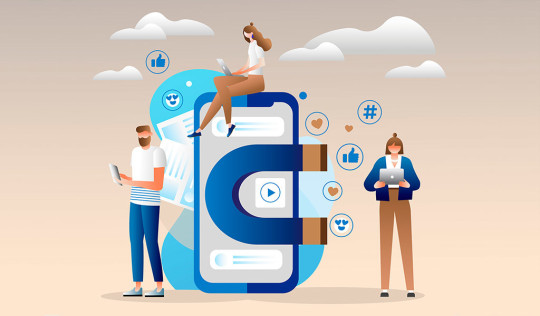
In the fast-paced landscape of modern marketing, retaining customers is just as crucial as acquiring new ones. Marketing automation has emerged as a powerhouse tool, offering businesses the ability to build and execute effective retention strategies. Let’s delve into how you can harness the potential of marketing automation to foster long-term customer relationships.
**1. Understanding Customer Behavior: The Foundation of Retention 🧠💡
Before diving into automation, it’s essential to understand your customers’ behavior. Utilize analytics tools to track customer interactions, purchase history, and engagement patterns. This data forms the foundation for crafting personalized and targeted retention campaigns.
**2. Segmentation for Precision Targeting
Marketing automation allows you to segment your audience based on various criteria such as demographics, purchase history, or engagement level. By creating distinct segments, you can tailor your retention efforts, ensuring that each group receives messages and offers that resonate with their specific needs and preferences.
**3. Automated Email Campaigns: Nurturing Customer Relationships 📧🤝
Create automated email campaigns designed to nurture existing relationships. This could include personalized welcome series, birthday emails, or exclusive offers for loyal customers. Marketing automation streamlines the process, ensuring timely and relevant communications without manual intervention.
**4. Re-Engagement Campaigns: Bringing Back Inactive Customers
Identify customers who have become less engaged or dormant. Marketing automation enables you to set up re-engagement campaigns, sending targeted messages and incentives to win back their interest. Whether it’s a special discount or a personalized recommendation, automation helps rekindle relationships with inactive customers.
**5. Loyalty Programs: Automated Rewards for Ongoing Engagement 🎁🔄
Implementing a loyalty program is a proven retention strategy. With marketing automation, you can seamlessly manage and automate the rewards process. From tracking customer points to sending automated reward notifications, automation ensures a frictionless experience for both customers and your team.
**6. Feedback Loops: Understanding Customer Sentiment
Automate the collection of customer feedback to gain insights into their satisfaction levels. Use surveys and feedback forms strategically placed in your communication channels. Analyzing this data helps in refining your retention strategies, addressing pain points, and enhancing overall customer experience.
**7. Predictive Analytics: Anticipating Customer Needs 📈🔮
Leverage predictive analytics within your marketing automation platform to anticipate customer behavior. By analyzing historical data, automation tools can provide valuable insights into what products or services a customer might be interested in next. This enables you to proactively tailor your retention efforts.
Conclusion: Streamlining Retention with Marketing Automation 🌐✨
Marketing automation empowers businesses to create and implement effective retention strategies with efficiency and precision. By understanding customer behavior, leveraging segmentation, automating email campaigns, implementing re-engagement tactics, managing loyalty programs, collecting feedback, and harnessing predictive analytics, you can build stronger bonds with your customers. Embrace the power of marketing automation to not only retain customers but to foster lasting loyalty and advocacy. 🚀💙
0 notes
Text
The Digital Engagement Map to Successfully Navigate the Travel and Hospitality Landscape in 2023

The travel and hospitality industry is evolving rapidly, driven by digital transformation and changing consumer behaviors. As we step into 2023, a robust digital engagement strategy is more crucial than ever. Let’s embark on a journey to explore the key elements of your digital engagement map to ensure success in this dynamic landscape.
1. Online Presence: Crafting a Seamless Digital Experience
In an era dominated by online interactions, your brand’s online presence is paramount. Ensure your website is user-friendly, mobile-responsive, and provides a seamless booking experience. Leverage engaging visuals and compelling content to capture the attention of potential travelers.
2. Social Media: Building Connections and Fostering Trust 🤳
Social media platforms are powerful tools for building a community and fostering trust. Share captivating travel stories, stunning visuals, and user-generated content to inspire and engage your audience. Actively respond to comments and messages, humanizing your brand and creating a sense of connection.
3. Personalization: Tailoring Experiences for Individual Travelers 🧳💼
Utilize data to personalize the customer journey. From personalized booking recommendations to post-stay offers based on preferences, personalization enhances the overall travel experience. Implementing dynamic content on your website and in email campaigns can significantly improve engagement.
4. Loyalty Programs: Turning One-Time Guests into Repeat Visitors 🌟🔄
Implementing a robust loyalty program encourages repeat business. Offer perks such as exclusive discounts, room upgrades, or personalized experiences for loyal customers. Leverage automation to manage and communicate with your loyalty program members effectively.
5. Chatbots: Enhancing Customer Service and Streamlining Bookings 🤖💬
Integrate chatbots into your website to provide instant assistance. Whether it’s helping with bookings, answering FAQs, or offering local recommendations, chatbots enhance the customer experience. Ensure that there’s a seamless handoff to human agents when needed.
6. Reviews and Testimonials: Building Credibility and Confidence
Positive reviews and testimonials play a pivotal role in the decision-making process for travelers. Actively encourage satisfied customers to leave reviews on platforms like TripAdvisor or Google. Showcase these testimonials on your website to build credibility and instill confidence in potential guests.
7. Email Marketing: Nurturing Customer Relationships 📧🤝
Craft engaging and personalized email campaigns to nurture relationships with past and potential customers. Share travel inspiration, exclusive offers, and updates about your services. Implement segmentation to tailor messages based on customer preferences and behaviors.
8. Contactless Experiences: Prioritizing Safety and Convenience 🚗🔒
Given the ongoing concerns around health and safety, prioritize contactless experiences. Implement mobile check-ins, digital room keys, and contactless payment options to enhance convenience and reassure travelers about their safety.
Conclusion: Navigating the Future of Travel and Hospitality 🚀🌟
As you navigate the travel and hospitality landscape in 2023, a comprehensive digital engagement strategy is your compass. From an enticing online presence to personalized experiences, loyalty programs, and embracing emerging technologies, these elements collectively shape a memorable and seamless journey for your guests. Embrace the digital transformation, stay attuned to consumer preferences, and let your digital engagement map guide you toward success in the ever-evolving travel industry. Bon voyage! ✈️🌐
0 notes
Text
Fintech App engagement report:-

Fintech apps have been gaining popularity in recent years as more people opt for digital financial services. With this trend comes the need to understand how these apps are being used and what drives user engagement.
In a recent study conducted by our team, we analyzed the engagement levels of various fintech apps across different demographics.
Here are some key findings from our report:
Mobile banking is becoming increasingly popular – The usage rates of mobile banking applications increased significantly over the last year with 75% increase among Gen Z users (aged 18-24), indicating that younger generations prefer using their smartphones for financial transactions
Personalization improves retention – Personalized content & offers resulted in better retention rates compared to generic messages or promos; Users want to feel valued & personalized messaging helps achieve that.
Security Concerns Deter Usage: Enhanced security features like two-factor authentication and biometric verification would lead towards greater customer satisfaction rates which would result in better retention rates , increased word-of-mouth referrals , positive reviews and ultimately more revenue.
User-friendly interface : Users expect an intuitive user experience within Fintech Apps where they can easily navigate through different account information & tools ; A cluttered UI or complex navigation could lead towards poor user experience
Push Notifications : Timely notifications about transactional activity, upcoming bills or payment reminders etc.. could encourage users to stay engaged with App
Based on these findings, it’s clear that personalization along with security measures play a major role when it comes to retaining customers within fintech industry leading towards greater customer satisfaction rates which would result in better retention rate s, increased word-of-mouth referrals , positive reviews and ultimately more revenue.
We hope this article provides insights into how you can improve your fintech app’s engagement levels!
0 notes
Text
Foodtech App engagement report

Foodtech apps have become increasingly popular as more people opt for food delivery and meal subscription services. With this trend comes the need to understand how these apps are being used and what drives user engagement.
In a recent study conducted by our team, we analyzed the engagement levels of various foodtech apps across different demographics.
Here are some key findings from our report:
Convenience is King – The primary reason why users choose foodtech Apps is convenience; For instance , 67% millennial customers (aged between 18-34) cited convenience as their main reason for using such applications
Customization Matters – Users want control over their orders! Personalizing meals based on dietary restrictions or preferences led towards better retention rates & user satisfaction
3 . Delivery Time : Faster delivery times led towards greater customer satisfaction rates which would result in better retention rates , increased word-of-mouth referrals , positive reviews and ultimately more revenue. 4 . User-friendly interface : Users expect an intuitive user experience within FoodTech Apps where they can easily navigate through different cuisines, restaurants & menus ; A cluttered UI or complex navigation could lead towards poor user experience 5 . Push Notifications: timely notifications about order status, promotional deals & discounts etc.. could encourage users to stay engaged with App
Based on these findings, it’s clear that personalization along with convenient ordering process play a major role when it comes to retaining customers within foodtech industry leading towards greater customer satisfaction rates which would result in better retention rate s, increased word-of-mouth referrals , positive reviews and ultimately more revenue.
We hope this article provides insights into how you can improve your foodtech app’s engagement levels!
0 notes
Text
Metrics that matter for growth

When it comes to measuring the success of your marketing efforts, there are countless metrics you could track. However, not all of these metrics are equally important when it comes to driving growth and increasing revenue.
Here are some key metrics that matter most for achieving sustainable business growth:
Customer Acquisition Cost (CAC) – This measures how much it costs to acquire each new customer; Lower CAC indicates higher efficiency & better ROI
Lifetime Value (LTV) – LTV is the total amount of revenue a customer generates over their lifetime with your business; Higher LTV indicates more profitable customers
3 . Conversion Rates: Tracking conversion rates across different channels helps identify areas in which improvements can be made towards achieving desired results 4 . Churn Rate : The percentage rate at which users stop using App or discontinue subscription services ; Lower churn rate means greater retention rates leading towards increased word-of-mouth referrals , positive reviews and ultimately more revenue. 5 . Engagement Metrics : Time spent within App per session , number of sessions per user etc.. indicate overall engagement levels with Application ; Higher engagement leads towards brand loyalty & repeat purchases By regularly monitoring these metrics above, businesses can make informed decisions about where to invest their resources and focus their attention on areas that will drive sustainable growth over time. We hope this article provides insights into how you can track meaningful metrics that matter most for growing your business!
0 notes
Text
Push notification Templates for E-commerce

Push notifications are an effective way to keep your customers engaged and informed about new products, promotions, sales and more. However, crafting the perfect message can be challenging. Here are some push notification templates that will help you engage with your customers in a meaningful way while driving revenue for your e-commerce business.
New Product Launch: “Get our latest product now! Shop [product name] today.”
Sale Announcement: “Don’t miss out on our [percent off/discount amount] sale! Shop now before it ends.”
Abandoned Cart Reminder: “Hey there, we noticed you left something behind! Complete your purchase of [product name], and get free shipping!”
Back in Stock Notification: “Great news – Your favorite product is back in stock! Order now before it sells out again.”
5 . Personalized Recommendations : “We think you’ll love this – Check out these similar items to what you’ve previously purchased” 6 . Time-limited offer : “24 hours only – Get 10% off all orders using code XYZ at checkout”
By utilizing these templates as a starting point when creating push notifications for your e-commerce store , marketing teams can save time while ensuring their messages resonate with their target audience leading towards increased engagement & conversion rates
Remember to always make sure that the messaging is personalized based on user preferences & interests whilst also providing value through limited-time offers or exclusive deals.
With these tips and templates , businesses can create successful campaigns that drive traffic , increase conversions & ultimately generate more revenue from their eCommerce platform !
0 notes
Text
Push Notification Templates for Fintech

Push notifications are an effective way to keep your customers informed about their financial activities and transactions. However, crafting the perfect message can be challenging. Here are some push notification templates that will help you engage with your customers in a meaningful way while driving revenue for your fintech business.
Account Balance Update: “Your account balance has been updated! Check it out now.”
Payment Reminder: “Don’t forget to pay your [bill name] by [due date].”
Transaction Alert : “You just spent $XX at Merchant Name using Card ending 1234”
4 . Security Notification : “We detected unusual activity on our account – please verify recent transactions” 5 . Investment Portfolio Updates : “Your investment portfolio has changed – see the new performance report” 6 . Customized Offers & Promotions : “Earn XX% cashback when you spend over YY amount this month” By utilizing these templates as a starting point when creating push notifications for your fintech platform , marketing teams can save time while ensuring their messages resonate with their target audience leading towards increased engagement & conversion rates
Remember to always make sure that the messaging is personalized based on user preferences & interests whilst also providing value through customized offers or promotions.
With these tips and templates , businesses can create successful campaigns that drive traffic , increase conversions & ultimately generate more revenue from their Fintech platform !
0 notes
Text
Push Notification Templates for gaming
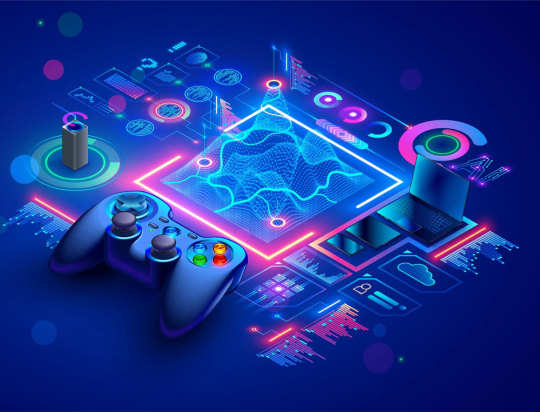
Push notifications are an effective way to engage your players and keep them coming back to your game. However, crafting the perfect message can be challenging. Here are some push notification templates that will help you engage with your audience in a meaningful way while driving revenue for your gaming business.
New Game Release: “Our latest game [game name] is now available! Download it today and start playing.”
Limited-time offers : “Don’t miss out – Get XX% off all in-game purchases until midnight tonight”
3 . Daily Rewards & Bonuses : “Log in daily this week to claim bonus rewards!”
4 . Level Up Notifications : “Congratulations! You’ve just leveled up and unlocked new features”
5 . Challenge Requests : “You’ve been challenged by [username]. Accept the challenge and compete against them!”
6 . Seasonal Events & Updates : “Winter has arrived – Join our Winter event & unlock exclusive items”
By utilizing these templates as a starting point when creating push notifications for your gaming app , marketing teams can save time while ensuring their messages resonate with their target audience leading towards increased engagement & conversion rates
Remember to always make sure that the messaging is personalized based on user preferences & interests whilst also providing value through limited-time offers or exclusive deals.
With these tips and templates , businesses can create successful campaigns that drive traffic , increase conversions & ultimately generate more revenue from their Gaming platform !
0 notes
Text
Push Notification Templates for Fitness Apps:-

Push notifications are an effective way to motivate your users and keep them engaged with their fitness goals. However, crafting the perfect message can be challenging. Here are some push notification templates that will help you engage with your audience in a meaningful way while driving revenue for your fitness app.
Daily Workout Reminder: “It’s time to get moving! Log into our app now and start working out”
Personalized Challenges : “You’re only X steps away from meeting today’s goal – Keep pushing!”
3 . Goal Achievement Celebrations : “Congratulations! You’ve achieved your target of running XX miles this month”
4 . Nutrition Tips & Reminders : “Don’t forget to log what you eat – it helps track progress & achieve weight loss”
5 . New Feature Launches: “Our new feature [feature name] is now available – check it out!”
6 . Customized Offers & Promotions : “Get XX% off all purchases when you sign up for our premium membership”
By utilizing these templates as a starting point when creating push notifications for your fitness app , marketing teams can save time while ensuring their messages resonate with their target audience leading towards increased engagement & conversion rates
Remember to always make sure that the messaging is personalized based on user preferences & interests whilst also providing value through customized offers or promotions.
With these tips and templates , businesses can create successful campaigns that drive traffic , increase conversions & ultimately generate more revenue from their Fitness App platform !
0 notes
Text
Push Notification Templates for ERP
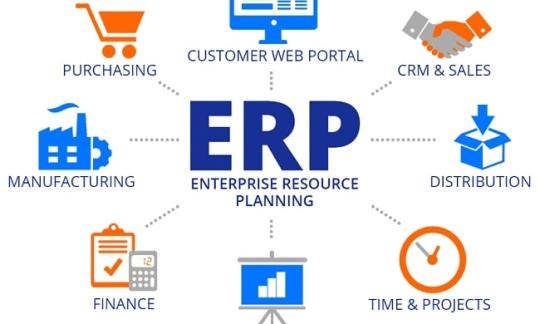
Push notifications are an effective way to keep your business informed about important updates and changes within your ERP system. However, crafting the perfect message can be challenging. Here are some push notification templates that will help you engage with your audience in a meaningful way while driving revenue for your ERP business.
System Outage Notification: “Our system is currently experiencing maintenance – expect delays”
Task Completion Reminders : “Please approve task ABC before COB today”
Inventory & Purchase Order Updates : “Inventory levels have dropped below minimum threshold – please reorder soon”
Security Notifications : “We detected suspicious activity on our network – please verify recent logins “
Workflow Alerts & Approvals : “You have pending approvals waiting in your workflow queue”
. Customized Offers & Promotions : “Upgrade to our Premium plan and get XX% off this month!”
By utilizing these templates as a starting point when creating push notifications for your ERP platform , marketing teams can save time while ensuring their messages resonate with their target audience leading towards increased engagement & conversion rates
Remember to always make sure that the messaging is personalized based on user preferences & interests whilst also providing value through customized offers or promotions.
With these tips and templates , businesses can create successful campaigns that drive traffic , increase conversions & ultimately generate more revenue from their ERP platform !
0 notes
Text
Top Five Ways to Drive Mobile Game Retention
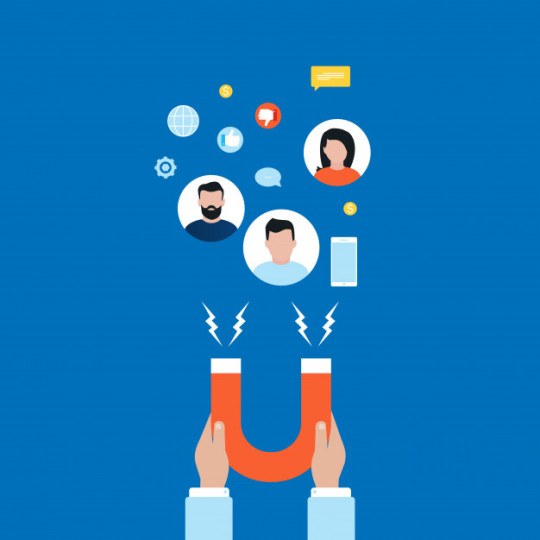
In the competitive world of mobile gaming, retaining players is as crucial as acquiring them. To build a loyal player base, your marketing strategy must go beyond initial downloads and focus on keeping users engaged. Here are the top five ways to drive mobile game retention effectively:
1. Understand Your Audience
Player Segmentation: Recognize that not all players are the same. Segment your audience based on behavior, preferences, and demographics. This allows you to tailor your retention strategies to specific player groups, maximizing their relevance.
Player Feedback: Actively seek and listen to player feedback. Use surveys, reviews, and social media to understand what your audience enjoys and what could be improved. Incorporate this feedback into updates to demonstrate that you value your players’ opinions.
2. Create Engaging In-Game Events
Regular Updates: Keep the game fresh with regular updates and new content. This could include additional levels, characters, challenges, or seasonal events. Regular updates maintain player interest and excitement, encouraging them to revisit the game.
Limited-Time Offers: Introduce time-sensitive in-game events and promotions. Limited-time offers create a sense of urgency, enticing players to log in and participate. This not only boosts retention but can also drive monetization through in-app purchases.
3. Implement Social Features
Multiplayer Modes: Integrate multiplayer modes or social features within the game. The social element adds a competitive or cooperative layer, fostering a sense of community among players. Friendly competition and collaboration can significantly enhance the overall gaming experience.
Social Media Integration: Enable players to share their achievements, high scores, or in-game activities on social media. Social sharing not only provides free marketing for your game but also helps create a sense of accomplishment for players, encouraging continued engagement.
4. Optimize Onboarding and Tutorials
Simplified Onboarding: Ensure that the onboarding process is intuitive and straightforward. Players should quickly understand the game mechanics and objectives. A complex onboarding experience can lead to frustration and early drop-offs.
Interactive Tutorials: Implement interactive tutorials that guide players through the game’s features. Interactive learning keeps players engaged and helps them feel more confident in their abilities, reducing the likelihood of abandonment due to confusion.
5. Reward Loyalty with In-Game Incentives
Loyalty Programs: Create in-game loyalty programs that reward players for consistent engagement. Offer virtual currency, exclusive items, or other incentives to players who log in daily or reach specific milestones. This encourages regular participation.
Daily Rewards: Implement a daily login reward system. This simple yet effective technique encourages players to return each day to claim their rewards. The anticipation of daily bonuses can become a powerful motivator for sustained engagement.
Conclusion: Building Long-Term Player Relationships
Driving mobile game retention is about building long-term relationships with players. By understanding your audience, regularly updating content, incorporating social features, optimizing onboarding, and rewarding loyalty, you can create an environment where players feel valued and invested in your game. Remember, successful retention strategies not only keep players playing but also contribute to positive word-of-mouth marketing, attracting new players to your game. Happy gaming! 🎮🚀
0 notes
Text
How You Can Leverage Analytics To Drive Loyalty
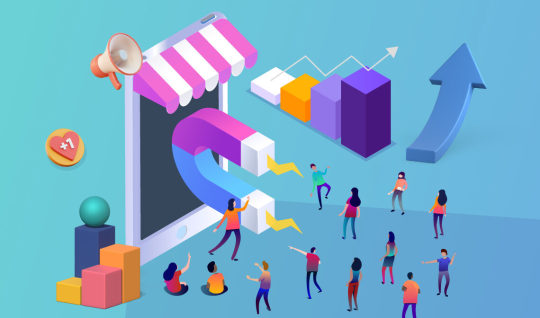
In the ever-evolving landscape of marketing, leveraging analytics has become a game-changer for brands aiming to enhance customer loyalty. Let’s explore how your marketing team can harness the power of analytics to drive customer loyalty and elevate your brand’s success.
1. Understand Customer Behavior
Data-driven Insights: Analytics provides valuable data on customer behavior. Dive into metrics such as website visits, time spent on pages, and preferred products or services. Understanding how customers interact with your brand helps you tailor loyalty strategies to their preferences.
Purchase History Analysis: Analyzing past purchases allows you to identify trends and patterns. Leverage this information to create targeted promotions, recommend complementary products, and personalize your communication with customers.
2. Personalize Loyalty Programs
Segmentation: Utilize analytics to segment your customer base. Categorize customers based on demographics, purchase frequency, or preferences. This segmentation enables you to personalize loyalty programs, offering tailored rewards and incentives that resonate with specific customer groups.
Behavioral Targeting: Leverage analytics to implement behavioral targeting. Identify customers who engage frequently with your brand and reward their loyalty with exclusive perks. Conversely, use targeted incentives to re-engage customers who may be slipping away.
3. Measure Loyalty Program Effectiveness
Conversion Tracking: Implement conversion tracking through analytics to measure the effectiveness of your loyalty programs. Monitor how loyalty members convert compared to non-members, helping you assess the impact of your initiatives and optimize for better results.
Feedback Analysis: Collect and analyze customer feedback within your loyalty program. Understand what aspects resonate positively with your audience and what areas may need improvement. This iterative feedback loop ensures continuous refinement of your loyalty initiatives.
4. Predictive Analytics for Anticipating Needs
Predictive Models: Leverage predictive analytics to anticipate customer needs. By analyzing historical data, you can create models that forecast future behavior, enabling you to proactively address customer expectations and offer personalized experiences.
Inventory Planning: Anticipate product demand through predictive analytics. Ensure that your loyalty program perks align with expected demand, avoiding stockouts and ensuring a seamless experience for your customers.
5. Enhance Customer Communication
Targeted Communication: Use analytics to craft targeted communication strategies. Send personalized messages, offers, and promotions based on customer preferences and behaviors. Tailoring your communication fosters a sense of connection and increases the likelihood of customer engagement.
Optimal Timing: Analyze customer activity patterns to determine the optimal timing for communication. Whether it’s sending a discount code after a certain period of inactivity or promoting new arrivals during peak shopping times, timing is crucial for effective engagement.
6. Seamless Integration with CRM Systems
CRM Integration: Ensure seamless integration between analytics and customer relationship management (CRM) systems. This integration streamlines data flow, providing a comprehensive view of each customer’s journey. A unified approach enhances your ability to drive loyalty through targeted strategies.
Data Security Measures: Implement robust data security measures to safeguard customer information. Building trust through secure data practices is paramount for fostering long-term loyalty.
Conclusion: Transform Loyalty with Analytics
Analytics serves as a catalyst for transforming customer loyalty from a static concept to a dynamic, data-driven strategy. By understanding customer behavior, personalizing loyalty programs, measuring effectiveness, leveraging predictive analytics, enhancing communication, and ensuring seamless CRM integration, your marketing team can unlock the full potential of analytics to drive customer loyalty. Embrace the power of data-driven insights to create lasting connections and turn customers into loyal brand advocates. 📈🔍🛍️
0 notes
Text
How to prevent Mobile App Churn

Mobile apps have become an essential part of our lives. However, it is becoming increasingly challenging for businesses to retain users and keep them engaged with their app. This leads to high rates of user churn which can be detrimental to the success of your business. Here are some tips on how marketing teams can prevent mobile app churn.
User Onboarding: The first impression is crucial when it comes to retaining users in your app. A smooth and personalized onboarding experience that highlights the key features & benefits of the app will help new users understand its value proposition leading towards higher retention rates.
Push Notifications : Regular push notifications with valuable updates or promotions can re-engage dormant customers who may not have used your application in a while.
In-app Messaging : Consider adding a messaging feature within your application allowing users to communicate directly with customer support teams without having to leave the platform
Personalization & Customization : Use data-driven insights from user behavior within the application like frequently accessed features , preferences etc.,to provide personalized recommendations or offers ultimately increasing engagement .
Gamification Elements: Introduce gamification elements such as reward points, badges, levels or contests into your mobile app that incentivize continued usage thus decreasing chances of abandonment
App Performance Optimization: Ensure that your application provides optimal performance through regular testing & bug fixing processes so that customers don’t lose interest due slow speeds/ crashes
By implementing these tips, marketing teams can increase user retention rates leading towards better ROI for their business whilst also providing greater value towards end-users by enhancing overall experience within the application
Remember – A happy customer base translates into increased brand loyalty making sure you stay ahead in this competitive market!
0 notes
Text
Mobile App Monetization Strategies:-

Developing an engaging and useful mobile application is only half the battle for businesses. The other half lies in generating revenue from it. Here are some effective mobile app monetization strategies that marketing teams can use to increase their bottom line.
In-app Advertising: One of the most common ways to generate revenue through your mobile app is advertising by providing ad space within your application targeted towards users based on demographics & interests
Freemium Model : Provide basic features of the application for free but charge premium (paid) version with additional advanced functionalities
Subscription Services: Charge users monthly or annually subscription fees in exchange for access to exclusive content or services like music streaming apps , online tools etc.,
In-App Purchases: Allow customers to buy virtual goods or currency within an application thus creating another stream of income
Sponsorship Deals: Partnering with relevant brands who could sponsor certain features/sections in the application leading towards better brand visibility while also diversifying revenue streams
Referral Programs : Reward existing users when they refer new ones to download and use your app incentivizing them into spreading word-of-mouth promotion about your business . By using these tried-and-tested monetization techniques, marketing teams can generate sustainable revenue streams from their applications while keeping user retention rates high ensuring long-term growth prospects. Remember – Monetizing an app requires careful consideration so always prioritize customer experience by avoiding intrusive ads , limiting notifications frequency, being transparent about pricing models and providing value-added services which ultimately lead towards greater ROI
0 notes
Text
Marketing Strategies for Startup CEO
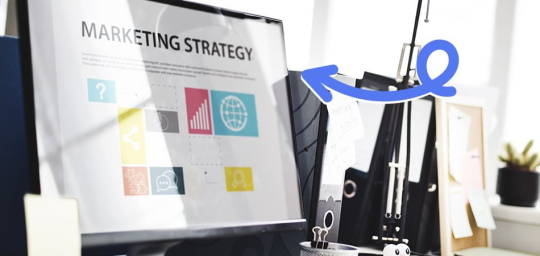
As a startup CEO, you have to wear multiple hats and take care of various aspects of your business. One such critical area is marketing. Here are some effective marketing strategies that can help you grow your business.
Targeted Advertising: Identify specific segments within your target audience and create tailored advertising campaigns based on their interests & demographics using platforms like Facebook or Google Ads.
2 . Content Marketing : Create valuable content in the form of blogs, videos, podcasts etc., that showcases thought leadership leading towards better brand visibility while also attracting potential customers
3 .Social Media Engagement: Use social media platforms to engage with existing customers & prospects through regular updates , responding to queries / feedback thus building engagement
4 . Influencer Marketing : Partnering with relevant influencers who could promote your product/service through their network providing greater exposure to the brand
5 . Community Building : Build dedicated online communities around shared interest groups/forums where members are invited to share information related to products/services ultimately creating stronger customer loyalty .
6 . Referral Programs: Encourage existing users/customers by incentivizing them into referring new ones towards increased word-of-mouth promotion about the company’s offerings
By implementing these tactics consistently over time, startups can build strong relationships with their target audience whilst also driving revenue growth without having to invest heavily into traditional advertising methods.
Remember – Consistency is key when it comes down to executing successful marketing campaigns so always prioritize quality over quantity when developing creative assets and messaging!
1 note
·
View note